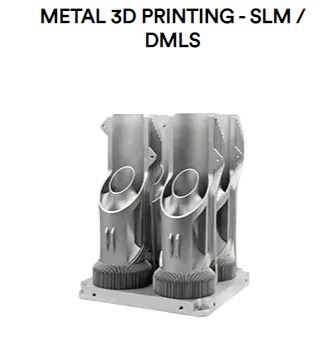Metal 3D printing using selective laser melting (SLM) and direct metal laser sintering (DMLS) technologies has revolutionized the manufacturing industry by enabling the production of complex, high-quality metal parts with unmatched accuracy and speed. Some of the advantages of metal 3D printing with SLM and DMLS include:
Design flexibility: With SLM and DMLS, complex geometries and intricate designs that would be impossible to achieve using traditional manufacturing techniques can be easily created. This allows for the production of lightweight parts with optimal performance characteristics, reducing material waste and costs.
Faster production: Metal 3D printing with SLM and DMLS allows for rapid prototyping and production, significantly reducing the time and costs associated with traditional manufacturing methods. Additionally, parts can be produced on-demand, eliminating the need for large inventories and reducing lead times.
Improved part quality: SLM and DMLS produce parts with higher accuracy, precision, and resolution than traditional manufacturing techniques, resulting in improved part quality and functionality.
Material variety: Metal 3D printing with SLM and DMLS can use a wide range of metals and alloys, including stainless steel, titanium, aluminum, and nickel-based alloys, providing manufacturers with a greater range of material options and capabilities.
Cost-effectiveness: While metal 3D printing with SLM and DMLS can be more expensive than traditional manufacturing methods for small-scale production, it can be cost-effective for large-scale production runs, particularly when producing complex parts that would require expensive tooling or fixtures with traditional manufacturing techniques.
Overall, metal 3D printing with SLM and DMLS offers numerous advantages for manufacturers seeking to produce high-quality, complex metal parts with greater efficiency and flexibility. As the technology continues to evolve and improve, it is likely to become an increasingly important part of the manufacturing landscape.

